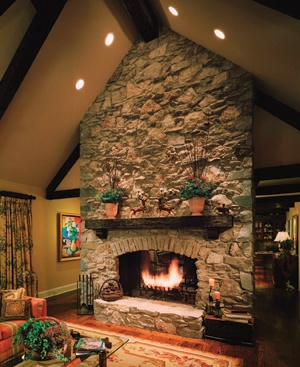Dear Jim: I’ve always liked recessed light fixtures, but heard they’re leaky and inefficient. Are there any new types of fixtures that are more energy efficient? Are they difficult to install? —Mike M.
Dear Mike: Recessed lights have been popular for decades and remain the lighting fixture of choice for overhead lighting. As with any other product in the home, some recessed light fixtures are more energy efficient than others. Efficient options can use 80 percent less electricity than inefficient versions that provide the same amount of light output with practically the same appearance.
Recessed light fixtures are unique because they penetrate the ceiling and are mounted in the ceiling of a room. From an energy conservation standpoint, this is not an issue when installed in the first-floor ceiling of a two-story house. However, if fixtures are installed in the second-story ceiling or the first-floor ceiling of a one-story house, a hole is created between a conditioned living area and the open, unconditioned attic area.
Without an efficient design and proper installation, a recessed lighting fixture allows conditioned air to leak out of the house. This is particularly true during winter when the warmer air inside a home naturally rises to the ceiling.
There are new energy-efficient recessed light fixture designs that meet Energy Star standards. All of these fixtures use fluorescent light sources instead of inefficient incandescent bulbs. This alone reduces electricity consumption by 75 percent. The inside surface of the new fixtures is also more reflective than older versions. Better reflectivity increases the amount of light the fixture will emit.
For fixtures in ceilings where indoor air leakage seems likely, select a new airtight design with a sealed canister. The sealed airtight recessed fixture canister, when installed properly, forms an airtight seal between the ceiling and the fixture.
As a safety note, if you already have recessed lighting fixtures in your home, do not go up into the attic and wrap them with insulation to try to save energy. This can cause the fixture to hold in too much heat, particularly when standard incandescent bulbs are used, and become an electrical or fire hazard.
When installing recessed light fixtures yourself, first determine your lighting goals. To brighten an entire room, downlighting can be quite effective. For task lighting, a single fixed vertical fixture directly over the work area seems effective. Wall wash recessed lighting can be used to accent a painting or other wall hangings.
It’s not difficult to install recessed light fixtures by yourself. For an attractive, efficient installation, cut the mounting holes the exact size recommended by the manufacturer. This makes it much easier to create a good seal between the fixture and the ceiling. Before drilling and cutting holes, make sure your fixture layout clears all the floor joists.
———-
James Dulley writes a syndicated column about home energy efficiency.

